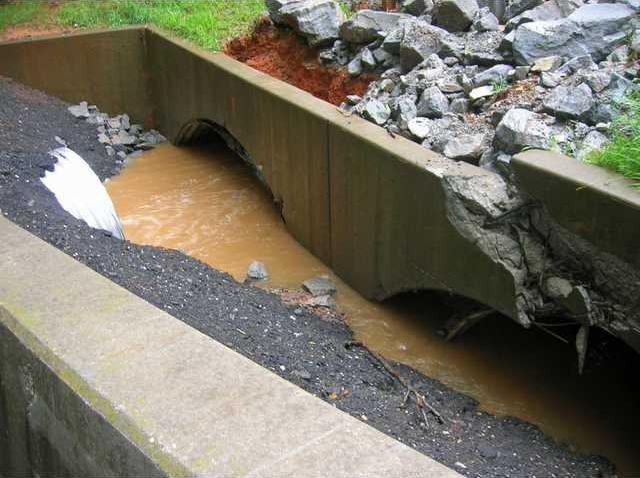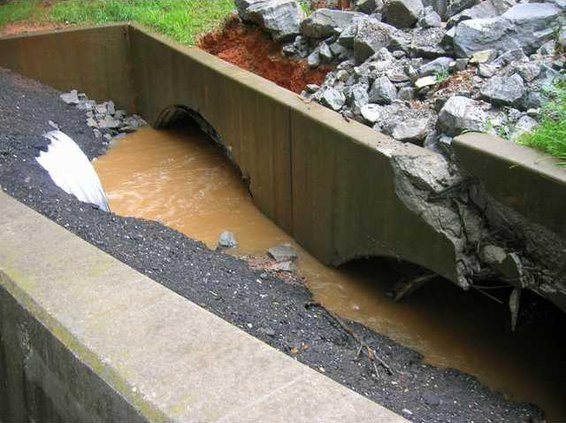City officials issued a declaration of local emergency Wednesday to avoid a reoccurrence of road and culvert failures.
The move came at 5:42 p.m., just minutes after the National Weather Service issued a flash flood warning at 5:25 p.m. for regions including North Hall County.
A state of local emergency allows more immediate decision-making by Mayor Mike Miller, for the immediate funding of reconstruction to minimize injury to people and damage to property.
Heavy rains fell throughout the day, and were expected to continue intermittently with the flash flood warning in effect until 11:30 p.m.
Several of the city’s culverts were nearing functional capacity by 6 p.m. Part of Spring Street, leading to Quad Oaks Apartments, has already been further damaged and partially closed, said Police Chief David Spillers immediately before the city’s declaration.
Between May 18 and 19, several storm water structures underneath roads in the city were compromised due to flash flooding. A road washout on Spring Street blocked access for 100-plus residents in the Quad Oaks’ apartment complex. Additionally, a culvert beneath Cantrell Street also failed.
“At this point, we have no failures,” said Mayor Mike Miller.
But to ensure safety, said Miller, “With the structural integrity (at risk), we’re trying to be proactive. There have been no structural or utility failures at this time. The city wants to ensure the safety of its citizens and will continue to closely monitor our roads and bridges.”
City officials scheduled for a a temporary bridge to be constructed this morning to ensure the road remained safe and passable.
“It will, basically, replace the temporary road,” said Miller.
The city is responsible for five culverts within its limits including Cantrell, Spring, Mulberry and East Main streets and Phil Niekro Boulevard.
South of the city, additional culverts run beneath Atlanta Highway adjacent to the Wayne Business Park, which sustained heavy damage in the previous flooding. Officials were forced to close the connector between Buford and Flowery Branch due to road flooding.
By 6:15 p.m., culverts there were also nearing capacity. In place to divert excess storm water from overtopping Atlanta Highway, the Flowery Branch Creek culverts direct the flow into a low-lying area between the business park and the Norfolk Southern Corp. railway.
“Those (culverts) are the responsibility of the DOT,” said Miller.
Additional culverts beneath the Norfolk Southern tracks are then intended to discharge storm water directly into Lake Lanier.
The Norfolk Southern culvert was recently replaced with a temporary system due to an earlier failure, and is currently awaiting a permanent solution. A permanent culvert system under the railway necessitates an agreement between Norfolk Southern and the U.S. Army Corps of Engineers, which oversees Lake Lanier activity.
If the Norfolk Southern Corp. culverts are unable to contain the excess runoff, there is potential for a chain reaction, overwhelming the city’s system.
“There’s always concerns when you have culverts that have failed,” said Miller.

